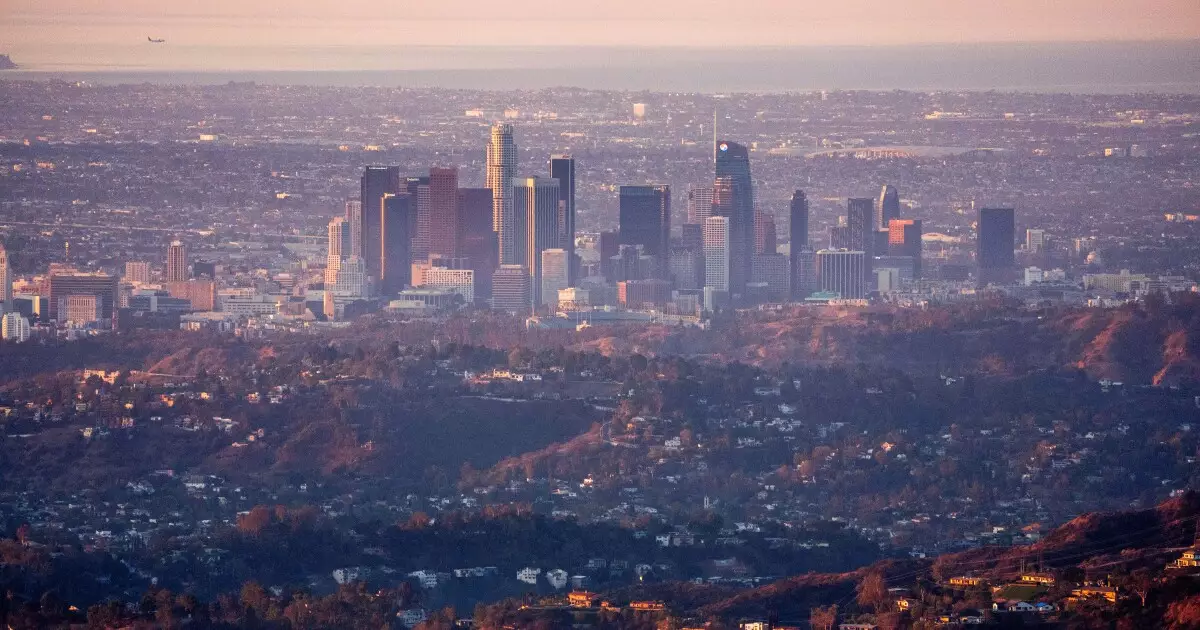In recent years, wildfires have rapidly shifted from isolated natural disasters to systemic economic threats that threaten the stability and growth of American communities. The recent academic analysis presented at the Brookings Institute underscores a stark reality: the perceived danger of wildfires is beginning to influence the cost of borrowing for essential local institutions like school districts. This isn’t just about smoky skies and burned forests; it’s about the economic resilience of our towns, the future of our children’s education, and the fiscal responsibility of municipalities already stretched thin.
The study reveals that the financial markets are responding aggressively to climate-driven wildfire risks. When the researchers examined over 150,000 school district bonds over two decades, they found that an increase in perceived wildfire threat significantly raised borrowing costs. These costs, reflected in bond spreads, aren’t trivial—they soared by 14 to 26 basis points depending on whether the bonds were in the primary or secondary markets. More importantly, this shift indicates that investors are increasingly factoring wildfire risks into their pricing models, a clear sign of a market adjusting to the reality of climate change.
This disconnect between reality and preparedness is alarming. Wildfire risks are not static—they are escalating; climate change ensures this trend will only intensify. Yet, many local governments and school districts are left vulnerable because their borrowing costs are rising before they even undertake any new projects. Essentially, climate anxieties are becoming a hidden tax on community development, raising questions about the true sustainability of funding infrastructure and education in fire-prone areas.
Economic Fallout and Political Implications
The economic effects of wildfires extend far beyond the immediate destruction. The aftermath of devastating fires is a financial burden carried by taxpayers and municipalities, sometimes amounting to hundreds of billions of dollars in damages and recovery costs. As the study notes, the January 2025 wildfires in Los Angeles are projected to cause insured losses of up to $75 billion alone. This stark forecast isn’t just a reflection of natural devastation—it’s a warning that the financial markets recognize, perhaps even fear, that climate change is rapidly eroding the fiscal buffers of local governments.
But what does this mean from a political perspective? There is an unmistakable shift in investor sentiment, with the market beginning to penalize regions exposed to higher wildfire risks. Politicians who ignore this reality do so at their peril. Rising bond spreads act as an economic wake-up call, signaling that the costs of unpreparedness are not some distant concern—they are here now, embedded in the debt costs of community institutions.
The debate often centers on climate policies, but what is missing from this discussion is a pragmatic, fiscally responsible approach that recognizes these risks without falling into alarmism. Wildfire costs and risks should lead to sensible investment in adaptation measures—better land management, fire-resistant infrastructure, and innovative financing tools like what the study terms “adaptation bonds.” These financial instruments offer a pragmatic way to transfer risk and foster resilience without overburdening taxpayers.
Market Signals and Policy Challenges
Market responses to wildfire risks reveal a skewed but increasingly clear reality: investors are no longer willing to ignore climate threats. Notably, bondholders are requiring higher yields—a direct cost—when they perceive increased wildfire threat levels. This trend reflects a broader consensus evolving within financial circles that climate change is impacting risk assessment models.
Yet, resistance persists among policymakers and financial elites. Some analysts, like Erika Smull from Breckenridge Capital Advisors, pointed out that previous research showed minimal risk premiums for climate risks at a national level, but even she concedes that 2025 could mark a turning point. Post-Hollywood wildfire destruction and the substantial reactions in bond spreads for California agencies highlight that this shift is already happening. Market behavior—price swings and widening spreads before any official credit downgrade—demonstrates that the financial community is beginning to factor in climate uncertainties more aggressively.
However, this change presents both challenges and opportunities. We must ask—are we adequately integrating these risks into our long-term planning? Governments and financial institutions need to move beyond reactive responses and establish forward-looking policies that incorporate climate uncertainty into municipal finance. Failing to do so risks locking in higher costs for essential services, diminishing the quality of education and public services in regions most vulnerable to natural disasters.
The Need for Practical, Center-Right Solutions
Addressing wildfire risk in a politically feasible manner requires pragmatic, center-right approaches that emphasize fiscal discipline, innovation, and shared responsibility. Relying solely on government intervention or climate alarmism isn’t sufficient; instead, sensible financial tools and targeted investments in resilience should form the backbone of the strategy.
For example, developing specialized “adaptation bonds” can facilitate targeted infrastructure upgrades that mitigate wildfire risks without burdening local taxpayers excessively. Such bonds could be backed by future risk assessments and insurance mechanisms, ensuring that communities are better prepared without sacrificing fiscal responsibility. Furthermore, fostering partnerships with private insurers could incentivize the adoption of fire-resistant infrastructure and land-use policies.
Fostering a culture of responsible risk management, backed by robust market signals, ensures that communities are less vulnerable to the economic shocks of wildfires. This approach aligns with conservative principles—prioritizing fiscal prudence, incentivizing innovation, and reducing reliance on government bailouts. While climate change is an undeniable reality, our policy response should be grounded in realistic risk assessment and sustainable management, not in fear-driven spending or rhetoric.
The emerging market data clearly indicates a shift: wildfire risks are no longer distant threats but immediate economic considerations that should reshape how we finance and plan for the future. Politicians who recognize this shift and act accordingly—by fostering resilient communities through prudent fiscal policies—will not just protect their constituencies but also uphold sound economic principles.

